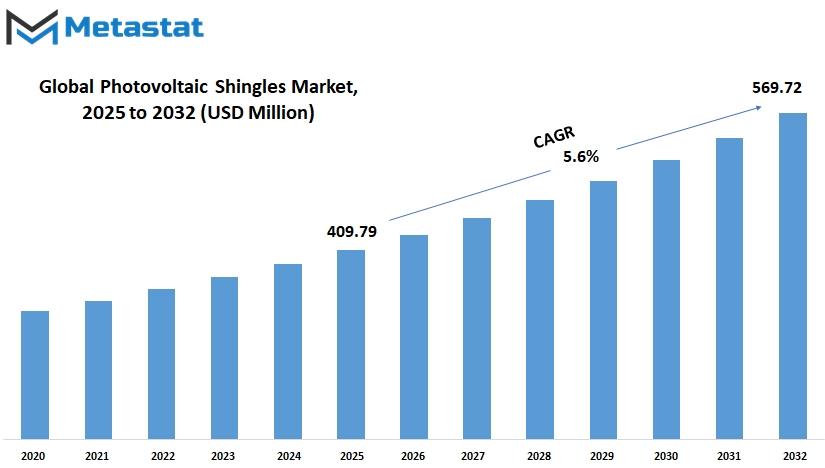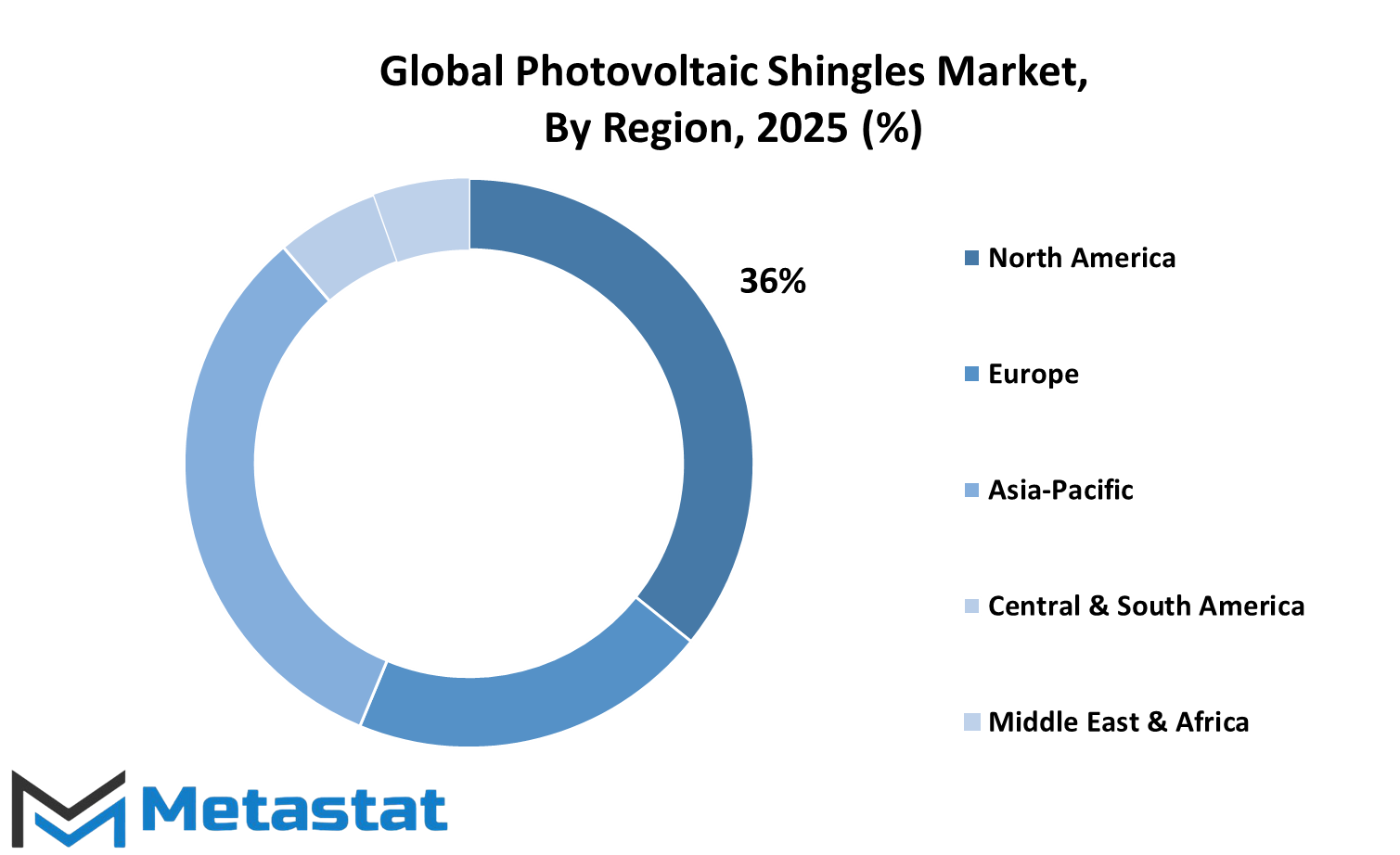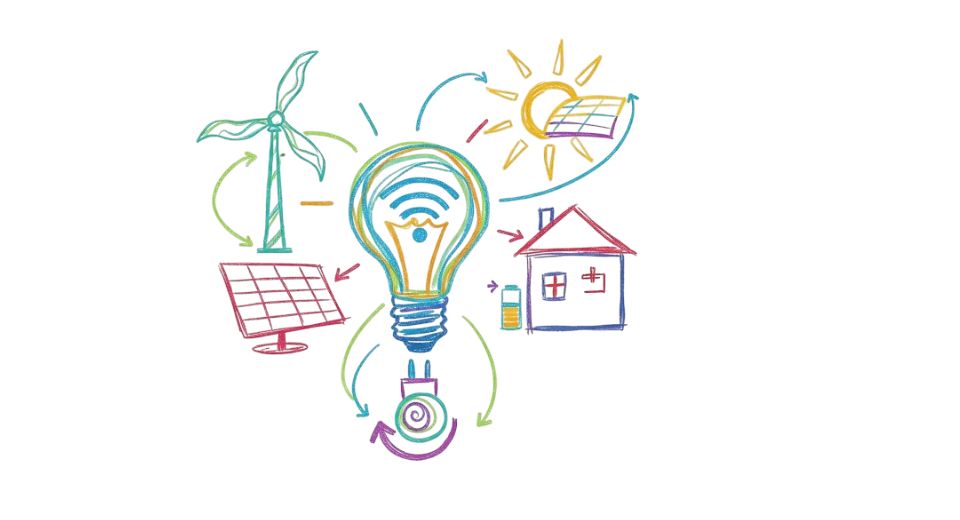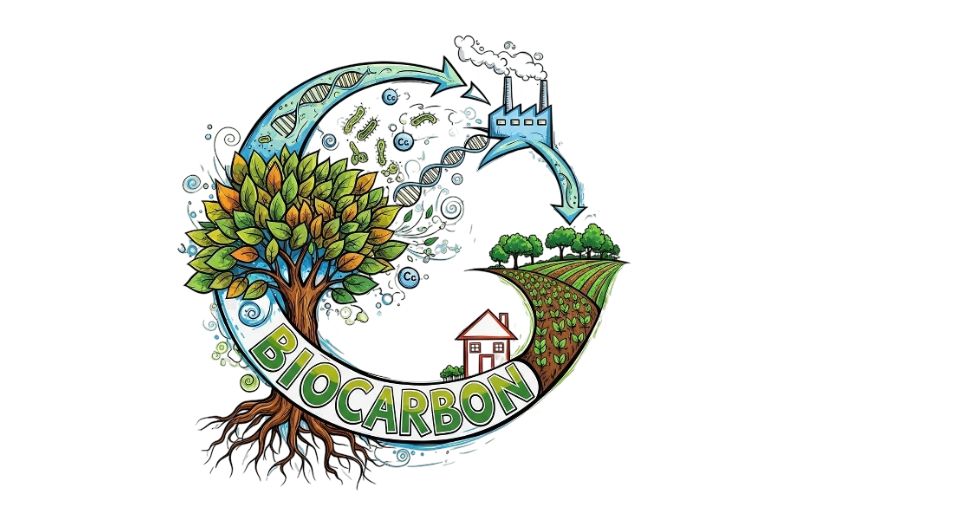MARKET OVERVIEW
The Global Photovoltaic shingles market will make a niche within the renewable energy and construction industry by fusing the features of solar energy applications with those of building aesthetics. Photovoltaic shingles, although predominantly intended to be visually similar to conventional roof coverings, will serve a dual purpose: they will be integral structural roof components and energy-generating elements. It will be an attractive market for residential, commercial, and institutional sectors, where energy independence and sustainability will be the factors driving design. Future developments of the technology and improvements in integration approaches will prompt manufacturers and end-users to recognize photovoltaic shingles as more than a niche product; they will consider it an important push in the development of building-integrated solar technologies.
The Global Photovoltaic Shingles market will continue to develop with an increasing rise in demand for energy-efficient solutions that can be integrated into the design tastes of the owner. Unlike the traditional solar panel that requires a mounting structure and alters the roofline, photovoltaic shingles will be a seamless alternative: they will be embedded in the roofing structure without changing the form and function of standard materials and yet adds a further benefit of a roof that generates solar power. Such integration would avoid separate installations and thus open new architectural use options in all climates and construction types.
As this market will evolve further with increasing changes in urban development and energy policies across the globe, it will grow increasingly relevant to homeowners, builders, and planners seeking long-term solutions for sustainable infrastructure. The Global Photovoltaic Shingles Market will serve those interests whose aim includes meeting regulatory requirements or reducing reliance on external electricity sources. As building codes and energy standards drive adoption, governments and regulatory agencies will set up incentives for design firms and contractors to favor roofing systems able to contribute towards the energy agenda.
Photovoltaic shingles will prove value to the construction and renewable sectors in material science, energy efficiency, and aesthetic performance offerings. The Global Photovoltaic Shingles market will be advanced by improvements in solar cell technology, greater roofing composite durability, and an array of digital tools for energy monitoring and system control. These shingles will ingrate with intelligent home systems and energy storage units for more personalized energy usage and optimization. Investments by the manufacturer will be based on designs that promote adaptability to varied roof geometries and environments.
Energy security will also be another driving force in attracting attention to this market. However, it will allow localized generation to align with the distributed energy strategy. The Global Photovoltaic Shingles market will continue converting buildings into direct contributors through its dissemination capability.
Global Photovoltaic Shingles market is estimated to reach $ 569.72 Million by 2032; growing at a CAGR of 5.6% from 2025 to 2032.

GROWTH FACTORS
The Global Photovoltaic Shingles market is getting buzz today as most people and businesses are shifting their focus to cleaner methods of energy production. These shingles replace the traditional roofing systems and have the additional functionality of weathering sunlight to generate electricity. With the enhancement of technology and increased awareness by people regarding the environment, this new emerging trend is believed to gain continuous interest in the future for using solar-based building materials. Photovoltaic roofs provide a renewable energy answer to people who do not want a rooftop that looks different from any regular roof as it is more appealing to those seeking energy-renewable solutions without altering the appearance of their homes or buildings. The demand is expected to increase as energy-efficient design becomes more commonplace in new buildings or retrofits.
The main growth drivers are increasing global concerns over climate change and action to control carbon emissions. Both of these factors, particularly tax benefits and subsidies by governments, will contribute to further cost reductions of photovoltaic shingles, thus increasing affordability. Advances in solar technology have made photovoltaic shingles more efficient regarding performance in weak sunlight areas. Rising energy prices will also convince people and businesses to seek value-adopted energy solutions covering their bills over time. All the above factors together will help in creating interest and faith in technology, making it the option for future construction and renovation.
However, several factors likely dampen the growth of the market. The major one is high upfront installation costs. Even with incentives, most potential buyers may shy away due to the high initial expenditure. In some areas, lack of awareness regarding solar shingles limits adoption. Moreover, roofing professionals and contractors, at times, do not have adequate training in handling photovoltaic materials, which can lead to problems in installation or extra costs.
All these factors notwithstanding, the future appears bright. More developments in green building standards and goals of sustainability will bring forth new avenues for the market. With reduction in production costs and increased awareness and education on their benefits, photovoltaic shingles could eventually become routine in residential and commercial construction. Over time, with better government support and better industry understanding, the Global Photovoltaic Shingles market would reach a stage of widespread adoption and would sit as an important part of the transition toward cleaner and smarter energy solutions.
MARKET SEGMENTATION
By Type
As the world moves toward cleaner sources of energy, the Global Photovoltaic Shingles market will soon be the center of attention. Solar power is no longer confined to cumbersome rooftop panels as homes and buildings become smarter and more energy conscious. Photovoltaic shingles, which appear to be just another type of roofing material, are gaining attention for being both practical and attractive. In a sense, these shingles generate energy while blending the aesthetics of the home, enticing not only consumers conscious of the environment but also those who care about appearance. This trend could eventually evolve into a routine choice for new construction and renovation work.
As time goes on, the implications of these advances along with affordability are going to mean many customers will consider solar energy a serious alternative. There are various types of photovoltaic shingles that fall within this market. Silicon solar shingles, with a strong foothold in the market, are being used. Well-established with proven track records of reliability in converting sunlight into usable electricity, silicon solar shingles form the first group. Another alternative is recognized in the label of CIGS, which stands for copper, indium, gallium, and selenium. Flexible and lightweight, these allow for greater installation options. These CIGS shingles will possibly have an even playing field as manufacturing improves.
Besides the silicon and CIGS shingles, other emerging types of solar shingles are being developed. These materials might be in the laboratory testing stage but have the potential to turn the view of solar applications in commonplace homes upside down. Therefore, greater innovation is likely through combinations of new materials or improvements that will eventually result in more durable and more efficient shingles even in low-sunlight environments. This translates to more products to be introduced for consumer choice in the very near future.
With changes in energy policies and greater investment in clean technologies, the Global Photovoltaic Shingles market also finds reasons for growth. Governments across regions offer incentives and support for green construction in a bid to encourage solar energy conversion. In time, communities will demand that their homes aid in the generation of power, rather than merely being energy consumers. This shift in perspective will accrue further advances and acceptance of solar roofing solutions. Once the concept gains traction, photovoltaic shingles would vanish from being an alternative able to be rejected into almost an automatic process berating with the design and powering of buildings.
By Technology
The Global Photovoltaic Shingles market is getting popular among consumers and companies alike as everyone transitioned into cleaner energy alternatives. Photovoltaic shingles represent the roof material used to generate electricity, an aspect that provides a promise for future building integration. The shingles do not sit above roofs like traditional panels; they can blend into the building structure itself, offering a more integrated and appealing look. This feature has started to attract homeowners and architects enticed toward energy efficiency without compromising building design. But, with regions slowly focusing on renewable energy targets, the attention paid to these shingles is expected to grow further.
Technological advancements will indeed shape the future of the Global Photovoltaic Shingles market, as will the awareness regarding sustainable energy in general. It shall, however, be the case that products will tend towards efficiency and affordability of use. The segmentation for technology category mostly falls into three divisions: monocrystalline, polycrystalline, and thin-film. Each of the technologies has its advantages. Monocrystalline shingles hold high efficiency for long life, making them the best bet for the end-user targeting optimal performance. Polycrystalline shingles may be inefficient to a slightly lesser degree but probably become more pocket-friendly, making them a well-balanced option. Thin-Film shingles aren't as great when it comes to energy output, but they are flexible and lightweight, opening up possibilities for all sorts of roofs or structures where weight and shape are concerns.
To make advances in clean energy, developments of the three technologies actually need to progress further. Improvement areas include durability, installation convenience, and compatibility with energy storage. Improving aesthetics will give householders more options as to how their roofs appear while generating electricity. All of these: government incentives, changes in the codes related to construction, and further availability of materials will contribute to the pace of market development.
People are becoming more aware of the impacts that energy choices have on the planet. Because of this fact, the Global Photovoltaic Shingles market has a good possibility of becoming one of the typical differences associated with future house and commercial buildings. With investment and research, it is possible to furnish photovoltaic shingles without a specialty product designation but rather as the common building design concept. This won't happen by magic, but it is certainly a direction that the entire world won't turn around tomorrow. Things are definitely looking bright on this front, especially as the world continues to pressure itself into powering everyday lives in cleaner and smarter ways.
By End User
Increasingly, countries are showing interest in cleaner energy solutions. Of course, as industry and individuals seek to fit into the cleaner-energy camp, this growth promises to be steady and sustainable over time. These photovoltaic shingles look a lot like normal roof tiles, while in fact, they also produce electricity from light. Their capacity to compromise both function and beauty makes them increasingly acceptable. They are a beautiful alternative to conventional solar panels, especially in buildings where aesthetics is of utmost importance. Thus, the demand for energy-efficient materials, such as these shingles, shall be gradually amplified globally as the world moves into carbon emission reduction.
Forthcoming innovative avenues in the Global Photovoltaic Shingles market possibly will play a substantial role in enabling power supply to both construction sites of new buildings and existing buildings. One of such sectors which are predicted to highlight significant growth in the coming time is the residential sector. As increased awareness among homeowners regarding energy savings and contribution in green activity goes up, acceptance of the shingles is expected to increase since they can be installed while new homes are being built or during roof replacements. Builders might also step up their offer of photovoltaic shingles as a standard option for roofing as they adapt to increasingly stringent building codes and environmental goals.
Commercial buildings are also expected to create demand. Business owners and property developers are always in favour of reducing their operating costs. This makes installing roofs a smart investment due to the financial benefits and the added value to the global ecological market. Offices, shopping malls and even schools may benefit energetic gains when these solar roof shingles are used. This breaks the pattern that companies must take to build a better, sustainable image for themselves in society: energy-generating shingles are a smart and conspicuous step in that direction.
The Global Photovoltaic Shingles market will also explore industrial buildings. More often than not, large roof areas are typical of offices, factories, warehouses, production facilities, and industrial facilities. These areas are suitable for applying solar energy. Like other facilities, they can now make use of photovoltaic shingles to lessen the pressure on them from conventional power systems and cut their cumulative carbon footprint. As the cost continues to decline and the technology matures, more and more will move in that direction.
The Global Photovoltaic Shingles market will see advancements in materials, energy storage, and grid-synchronizing technologies. Photovoltaic shingles shall, therefore, become an increasingly common feature of building design across all sectors, as developing policies and public interest will continually favor clean energy. This would lead to further constructing buildings that are aligned not just energy-efficient with future environment standards but also with future goals.
|
Forecast Period |
2025-2032 |
|
Market Size in 2025 |
$ 409.79 million |
|
Market Size by 2032 |
$ 569.72 Million |
|
Growth Rate from 2025 to 2032 |
5.6% |
|
Base Year |
2024 |
|
Regions Covered |
North America, Europe, Asia-Pacific, South America, Middle East & Africa |
REGIONAL ANALYSIS
Meaningful growth is projected in the Global Photovoltaic Shingles market in the near future due to recent years' advances in the clean energy sector and growing realization about sustainable power sources. Regions worldwide are gearing up for a phasing-out of fossil fuels, which in turn is bringing a lot of attention to solar solutions like photovoltaic shingles. What makes these shingles unique is their ability to serve both as traditional roofing material and as a source of electricity. The combination of practicality with energy efficiency is making these shingles the buzzwords among homeowners, governments, and developers alike.
Certainly, North America is a huge region for adoption, especially in the USA and Canada, where investment is starting to flow into the renewable energy projects. Supportive government policies and a desire to upgrade residential infrastructure will surely convince many more to consider solar-integrated roofing systems. With environmental concerns growing, photovoltaic shingles are now being considered a viable option for homeowners opting for more enlightened green choices.
Indeed, Europe will also do a fair bit for this market. Germany, France, and the UK are already leading the way to reduce carbon footprints and often incentivize the use of solar energy. Solar shingles could provide a realistic intervention to generate clean power without needing more land or space as the cities get denser in population and energy demand rises. Aesthetic appeal is another plus for these shingles since their ability to mimic traditional roofs fits well in old cities where historical integrity matters.
With nations like Chin, Japan, and India expressing interests in alternative energy, growth accruement shall mostly come from the Asia-Pacific. The rapid population growth and concurrent construction activities may witness an upsurge in demand for rooftop solar options. Asia's movement towards improved infrastructure and the green building push forming the bulk of photovoltaic shingle adoption in residential and commercial sectors.
The Global Photovoltaic Shingles market will also benefit from South America and the Middle East & Africa. While these regions may otherwise contend with varying challenges, be they economic limitations or levels of solar exposure, there is still much potential to be tapped. In these regions, governments and private investors are slowly starting to realize the need for effective solar power harnessing, and advanced roofing solutions could thus forge their way into that narrative.
In turn, the Global Photovoltaic Shingles market will likely witness further growth, with each region throwing up its own opportunities by virtue of specific needs, climatic conditions, and sustainable development goals.

COMPETITIVE PLAYERS
Gradually, the Global Photovoltaic Shingles Market is erring into the spotlight with the demand for cleaner energy, as well as more sustainable energy sources globally. As many others seek better ways to become less dependent on traditional power grids, solar technology is becoming even more relevant in life. Among many others solar solutions, photovoltaic shingles stand out with their inbuilt ability to generate energy while becoming the most modern roofing designs. They have been constructed to act like and be functionally equivalent to ordinary materials on a roof while silently energizing homes and buildings.
The really coolest thing about this market is how it's starting to reshape the architecture and the future of energy production-the fact that instead of big panels protruding out of the roof into the sky, the thinking has now changed to shingles that fit into the roof structure. This opens doors of design possibilities, and offers a much more aesthetic option for people interested in having solar power without having the facade of their homes changed. It's not all about aesthetics, though. These shingles are expected to become more efficient, long-lasting, and easier to install as the technology becomes more sophisticated, and improved manufacturing techniques put that progress into place. This would mean a further widening in residential and commercial adoption.
Driving the growth are many competitive companies that are in the fray to take the leadership in the Global Photovoltaic Shingles market. These include SUNROVER POWER CO., LTD, CertainTeed, SunTegra Solar Roof Systems, SunStyle, Luma Solar, GAF Energy LLC, Targray, and SolteQ Europe B.V. and have been working hard into the production and expansion of their global footprint for better products. They are, for example, shifting their shingles construction technology to result in quality roofing capable of performing well in diverse climates as well as adhering to modern building codes and customer satisfaction behavior. Each company has its difference in terms of better prices, better materials, or more creative designs.
This market has a bright future ahead. More people are becoming aware of renewable energy, and the conditions are becoming more favorable for widespread use as governments develop policies to facilitate clean technology. Soon, photovoltaic shingles might be present in most new building projects, especially as buyers demand energy-efficient features in their houses with time. The current trends are not the only reason for the growth of the Global Photovoltaic Shingles market; it is also allowing the creation of more sustainable tomorrows. It will probably figure more prominently in the coming years as far as buildings are designed and powered.
Photovoltaic Shingles Market Key Segments:
By Type
- Silicon Solar Shingles
- Copper – Indium – Gallium – Selenide (CIGS) Solar Shingles
- Others
By Technology
- Monocrystalline
- Polycrystalline
- Thin-Film
By End User
- Residential Buildings
- Commercial Buildings
- Industrial Buildings
Key Global Photovoltaic Shingles Industry Players
- SUNROVER POWER CO.,LTD
- CertainTeed
- SunTegra Solar Roof Systems
- SunStyle
- Luma Solar
- GAF Energy LLC
- CertainTeed, LLC
- LUMA Solar
- Targray
- SolteQ Europe B.V.
WHAT REPORT PROVIDES
- Full in-depth analysis of the parent Industry
- Important changes in market and its dynamics
- Segmentation details of the market
- Former, on-going, and projected market analysis in terms of volume and value
- Assessment of niche industry developments
- Market share analysis
- Key strategies of major players
- Emerging segments and regional growth potential








 US: +1 3023308252
US: +1 3023308252






